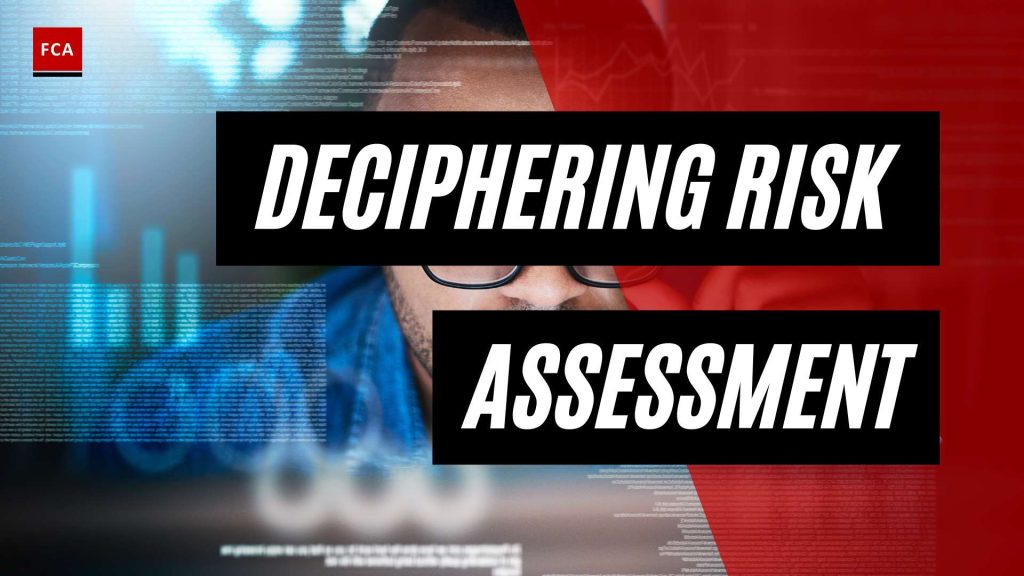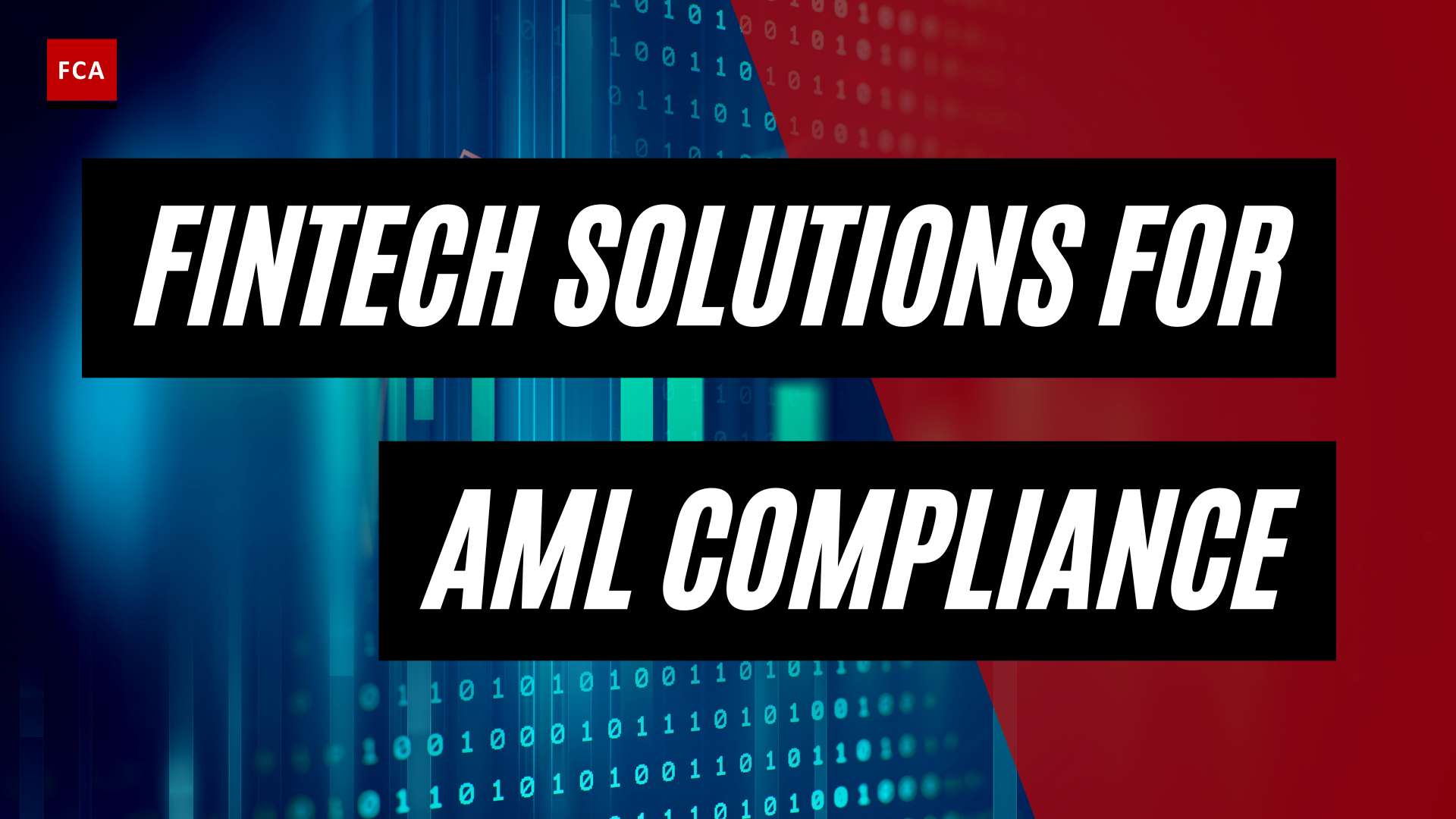Understanding AML Compliance
To effectively combat money laundering and terrorist financing, organizations must prioritize anti-money laundering (AML) compliance efforts. AML compliance refers to the measures and procedures implemented by businesses to detect and prevent money laundering and the financing of terrorism. This is crucial not only for regulatory compliance but also for safeguarding the integrity of the financial system and protecting businesses from legal and reputational risks.
Importance of AML Compliance
AML compliance plays a vital role in maintaining the integrity of the financial system and preventing illicit activities. By adhering to AML regulations, organizations demonstrate their commitment to ethical practices and their role in combating financial crimes. It also helps to build trust with customers, investors, and regulators, enhancing the organization’s reputation in the market.
Failure to comply with AML regulations can result in severe consequences, including financial penalties, legal action, and damage to the organization’s reputation. Additionally, non-compliance may lead to increased risks such as money laundering, fraud, and reputational damage. Therefore, organizations must prioritize AML compliance to mitigate these risks and ensure the transparency and integrity of their operations.
Role of Risk Assessment in AML Compliance
An effective AML compliance program relies on a thorough understanding of the risks associated with money laundering and terrorist financing. This is where an AML risk assessment comes into play. A risk assessment is a systematic process that helps organizations identify, analyze, and mitigate ML/TF risks within their operations.
The purpose of an AML risk assessment is to identify potential vulnerabilities and assess the likelihood and impact of ML/TF risks. By conducting a risk assessment, organizations can allocate their resources effectively and implement appropriate risk mitigation strategies. This helps to streamline regulatory compliance efforts and ensures that the organization’s AML program is tailored to address its specific risk profile.
During an AML risk assessment, several components are considered, including the organization’s customer base, products and services offered, geographic locations of operations, and the regulatory environment. By analyzing these components, organizations can identify potential ML/TF risks and determine the appropriate level of due diligence and monitoring required.
By understanding the importance of AML compliance and the role of risk assessment within it, organizations can develop robust AML compliance programs and effectively mitigate the risks associated with money laundering and terrorist financing.
Developing an AML Compliance Program
To effectively combat money laundering and terrorist financing, organizations must establish a robust AML (Anti-Money Laundering) compliance program. This program serves as a framework for identifying, assessing, and mitigating ML/TF (Money Laundering/Terrorist Financing) risks. Developing an AML compliance program involves key elements, a series of steps, and the implementation of a risk-based approach.
Key Elements of an AML Compliance Program
An effective AML compliance program comprises several essential elements. These elements collectively contribute to the organization’s ability to prevent, detect, and report suspicious activities. Some key elements include:
- AML Policies and Procedures: Establishing clear policies and procedures that outline the organization’s commitment to AML compliance and the steps to be taken to ensure adherence.
- AML Compliance Officer: Appointing a designated AML compliance officer responsible for overseeing the program, ensuring compliance with regulations, and implementing necessary controls.
- AML Training Program: Providing comprehensive training to employees on AML policies, procedures, and the identification of suspicious activities.
- AML Compliance Checklist: Utilizing a checklist to ensure that all necessary AML compliance measures are in place and regularly reviewed.
- Ongoing Monitoring and Review: Implementing systems and controls to monitor customer transactions, identify and investigate suspicious activities, and regularly reviewing and updating the AML compliance program.
Steps to Develop an AML Compliance Program
Developing an effective AML compliance program involves a series of steps to ensure comprehensive coverage of ML/TF risks. These steps include:
- Risk Assessment: Conducting an AML risk assessment to identify potential ML/TF risks specific to the organization’s operations, customer base, and geographical location. This assessment serves as a foundation for developing effective risk mitigation strategies.
- Policy and Procedure Development: Creating AML policies and procedures that align with regulatory requirements and address the identified ML/TF risks. These policies should cover customer due diligence, transaction monitoring, record-keeping, and reporting of suspicious activities.
- Implementation and Communication: Implementing the AML policies and procedures across the organization, ensuring that all employees are aware of their roles and responsibilities in maintaining AML compliance.
- Training and Awareness: Providing comprehensive training to employees at all levels, including the board of directors, management, and front-line staff. This training should cover AML regulations, the identification of red flags, and reporting suspicious activities.
- Ongoing Monitoring and Reporting: Establishing systems and processes to monitor customer transactions, detect unusual patterns, and report suspicious activities to the appropriate authorities in a timely manner.
Implementing Risk-Based Approach in AML Compliance
A risk-based approach to AML compliance is crucial for effectively allocating resources and focusing efforts on higher-risk areas. This approach involves a three-step process: risk identification, risk assessment, and risk mitigation and management.
- Risk Identification: Organizations should remain informed about the mechanisms commonly employed by perpetrators and continuously identify potential ML/TF risks. This process requires staying updated on emerging trends and documenting the thought processes behind risk identification.
- Risk Assessment: Once potential risks are identified, a thorough assessment is conducted to determine the likelihood and potential impact of these risks. ML/TF risks are generally categorized as low, medium, or high, allowing organizations to prioritize their mitigation efforts accordingly.
- Risk Mitigation and Management: Based on the outcomes of the risk assessment, organizations take appropriate action to reduce ML/TF activities, report suspicious activities or transactions, and manage the identified risks. This includes implementing controls, conducting ongoing monitoring, and reporting suspicious activities to the relevant authorities.
By developing a comprehensive AML compliance program and implementing a risk-based approach, organizations can effectively address ML/TF risks and contribute to the global fight against financial crime. It is important to regularly review and update the program to remain current with changing regulations and emerging ML/TF trends.
Conducting an AML Risk Assessment
To ensure effective AML compliance, organizations must conduct a thorough AML risk assessment. This process helps identify, analyze, and mitigate risks associated with money laundering (ML) and terrorist financing (TF). By conducting an AML risk assessment, companies can develop a comprehensive understanding of their risk exposure and implement appropriate risk mitigation strategies. Let’s delve into the purpose, components, and methodology of an AML risk assessment.
Purpose of an AML Risk Assessment
The primary purpose of an AML risk assessment is to identify and evaluate the ML/TF risks faced by an organization. It provides valuable insights into the risk landscape, enabling companies to prioritize resources and implement effective risk mitigation measures. By understanding the specific risks they face, organizations can design targeted controls and procedures to prevent financial crime and achieve regulatory compliance.
Components of an AML Risk Assessment
An AML risk assessment typically consists of the following components:
- Customer Risk Assessment: This involves assessing the ML/TF risks associated with different customer types, such as individuals, corporations, and politically exposed persons (PEPs). Factors like customer behavior, transaction volume, and geographic locations play a crucial role in determining the level of risk posed by each customer.
- Product/Service Risk Assessment: Evaluating the ML/TF risks associated with various products, services, and delivery channels is essential. Certain products or services may be more vulnerable to abuse by money launderers or terrorists. This assessment helps organizations identify high-risk areas and implement appropriate controls.
- Geographic Risk Assessment: Assessing the ML/TF risks associated with different geographic locations is crucial, as money laundering and terrorist financing activities can vary across jurisdictions. Factors such as the presence of high-risk countries, political stability, and regulatory environment need to be considered.
- Internal Controls Assessment: Evaluating the effectiveness of an organization’s internal controls is vital in identifying vulnerabilities and weaknesses that could be exploited. This assessment examines the adequacy of policies, procedures, and systems in place to prevent and detect financial crime.
Methodology for Conducting an AML Risk Assessment
The methodology for conducting an AML risk assessment can vary depending on the organization’s size, complexity, and industry. However, a common approach involves the following steps:
- Gather Data: Collect relevant information about the organization’s customers, products, services, geographic locations, and internal controls. This data forms the foundation for the risk assessment process.
- Identify ML/TF Risks: Analyze the collected data to identify potential ML/TF risks. This involves assessing customer profiles, transaction patterns, and other risk indicators to determine the likelihood and impact of money laundering or terrorist financing activities.
- Categorize Risks: Categorize the identified ML/TF risks into low, medium, and high-risk categories based on their severity and potential impact on the organization. This categorization helps prioritize risk mitigation efforts.
- Assign Risk Scores: Assign risk scores to each identified risk based on predefined criteria. This scoring system allows for a quantitative assessment of risks and enables the organization to allocate resources accordingly.
- Develop Risk Mitigation Strategies: Once the risks are assessed and scored, develop risk mitigation strategies tailored to each risk category. These strategies may involve implementing additional controls, enhancing due diligence measures, or conducting further investigations.
By following a comprehensive methodology, organizations can gain a deeper understanding of their ML/TF risks and implement proactive measures to mitigate those risks effectively. A robust AML risk assessment is an integral part of an organization’s overall AML compliance program, ensuring regulatory compliance and safeguarding against financial crime.
Identifying ML/TF Risks
In the world of anti-money laundering (AML) compliance, it is crucial to identify and assess the risks of money laundering (ML) and terrorist financing (TF). This section will delve into understanding money laundering and terrorist financing, common methods and indicators of ML/TF, and the importance of ongoing monitoring and risk identification.
Understanding Money Laundering and Terrorist Financing
Money laundering involves the process of making illegally gained proceeds appear legitimate by disguising their true origin. This is done by channeling funds through legitimate financial systems, making it difficult to trace the illicit source (Sanction Scanner). On the other hand, terrorist financing refers to the provision or collection of funds, directly or indirectly, with the intention of supporting terrorist activities (Sanction Scanner).
To effectively combat ML/TF, it is crucial for businesses and financial institutions to understand the methods and indicators associated with these illicit activities.
Common Methods and Indicators of ML/TF
Money laundering and terrorist financing can occur through various methods and channels. Some common methods include:
- Placement: The initial stage where illicit funds are introduced into the financial system, typically through deposits or purchases of assets.
- Layering: The process of making the source of funds more difficult to trace by conducting multiple transactions, often involving complex financial transactions and transfers between jurisdictions.
- Integration: The final stage where the laundered funds are reintroduced into the legitimate economy, appearing as legitimate assets or investments.
Indicators of ML/TF can vary depending on the specific circumstances and industries involved. However, some common indicators include:
- Unusually large transactions that are inconsistent with a customer’s profile or known source of income.
- Frequent and unexplained transactions involving high-risk countries or individuals.
- Transactions involving shell companies or offshore jurisdictions with limited transparency.
- Rapid movement of funds between accounts or jurisdictions without a clear business rationale.
These indicators highlight the importance of ongoing monitoring and risk identification to detect and prevent ML/TF activities.
Ongoing Monitoring and Risk Identification
Ongoing monitoring is a crucial aspect of AML compliance. It involves the continuous review of customer transactions, behavior, and patterns to identify any suspicious activities or deviations from established norms (Sanction Scanner). By implementing robust monitoring systems and procedures, businesses and financial institutions can detect potential ML/TF risks and promptly take appropriate actions.
Risk identification is an integral part of ongoing monitoring. It involves the identification of high-risk customers, products, services, and geographic locations based on predetermined risk factors (Sanction Scanner). By regularly assessing and updating risk profiles, institutions can ensure that their AML compliance efforts are tailored to the specific risks they face.
By understanding the complexities of money laundering and terrorist financing, recognizing common methods and indicators, and implementing effective ongoing monitoring practices, businesses and financial institutions can strengthen their AML compliance programs and contribute to the overall integrity of the financial system.
Assessing ML/TF Risks
When it comes to AML (Anti-Money Laundering) compliance, assessing ML/TF (Money Laundering/Terrorist Financing) risks is a critical step in developing a robust AML compliance program. By categorizing ML/TF risks, considering relevant factors, and analyzing the likelihood and impact of these risks, organizations can effectively identify and mitigate potential threats.
Categorizing ML/TF Risks: Low, Medium, High
To assess ML/TF risks, organizations commonly categorize them as low, medium, or high based on the level of potential risk they pose. This categorization allows for a targeted allocation of resources and the implementation of appropriate risk mitigation measures.
| Risk Category | Description |
|---|---|
| Low | Risks that have a minimal likelihood and impact on the organization. These risks may be easily managed with existing controls and procedures. |
| Medium | Risks that have a moderate likelihood and impact on the organization. These risks may require additional controls and monitoring to effectively mitigate them. |
| High | Risks that have a significant likelihood and impact on the organization. These risks require immediate attention, robust controls, and continuous monitoring to mitigate their impact effectively. |
By categorizing ML/TF risks, organizations can prioritize their efforts and focus resources on areas that pose the greatest threats.
Factors to Consider in ML/TF Risk Assessment
When assessing ML/TF risks, several factors should be considered to ensure a comprehensive evaluation. These factors may vary depending on the organization’s industry, customer base, products, and services. Some common factors to consider include:
- Customer Risk: Assessing the risk associated with different types of customers, such as high-profile individuals, politically exposed persons (PEPs), or customers from high-risk jurisdictions.
- Product and Service Risk: Evaluating the risk associated with specific products or services offered by the organization, such as international wire transfers or private banking services.
- Geographic Risk: Considering the risk associated with conducting business in certain geographic locations known for money laundering or terrorist financing activities.
- Transaction Risk: Analyzing the risk associated with specific transaction types, such as large cash transactions or frequent high-value transfers.
By examining these factors and conducting a thorough assessment, organizations can gain a comprehensive understanding of the ML/TF risks they face.
Analyzing the Likelihood and Impact of ML/TF Risks
Once ML/TF risks have been categorized and relevant factors have been considered, the likelihood and impact of each risk should be analyzed. This analysis helps organizations determine the level of attention and resources required to mitigate these risks effectively.
The likelihood assessment involves evaluating the probability of a specific ML/TF risk occurring based on historical data, industry trends, and other relevant information. This assessment helps organizations identify high-risk areas that require immediate attention.
The impact assessment involves analyzing the potential consequences of an ML/TF risk materializing. This assessment considers the financial, reputational, and regulatory impact that such risks may have on the organization. By understanding the potential impact, organizations can prioritize risk mitigation efforts accordingly.
It’s important to note that ML/TF risks are not static and may evolve over time. Therefore, regular updates to the risk assessment are necessary to reflect changes in the organization’s products, services, customers, and geographic locations (FFIEC). This ensures that the risk assessment remains relevant and effective in identifying and mitigating ML/TF risks.
By categorizing ML/TF risks, considering relevant factors, and analyzing the likelihood and impact of these risks, organizations can strengthen their AML compliance efforts and implement appropriate risk mitigation measures. A comprehensive and well-executed ML/TF risk assessment is a cornerstone of an effective AML compliance program, enabling organizations to stay proactive in combating money laundering and terrorist financing activities.
Mitigating ML/TF Risks
As part of an effective AML compliance program, it is crucial to implement risk mitigation strategies to prevent and detect money laundering (ML) and terrorist financing (TF) activities. Mitigating ML/TF risks involves taking proactive measures to reduce the likelihood and impact of these illicit activities. This section will explore risk mitigation strategies, reporting suspicious activities, and ongoing management of ML/TF risks.
Risk Mitigation Strategies in AML Compliance
Risk mitigation plays a pivotal role in AML compliance by minimizing the vulnerabilities that can be exploited by money launderers and terrorists. It involves identifying potential risks and implementing controls to mitigate them. These strategies can include:
- Customer Due Diligence (CDD): Conducting thorough due diligence on customers to verify their identities, assess their risk profiles, and understand the purpose and nature of their transactions. This helps in identifying and mitigating the risk of potential ML/TF activities.
- Enhanced Due Diligence (EDD): For high-risk customers or transactions, implementing enhanced due diligence measures, such as gathering additional information, conducting periodic reviews, and obtaining senior management approval. This provides a higher level of scrutiny and helps to mitigate the increased risk associated with these relationships.
- Transaction Monitoring: Employing robust transaction monitoring systems to detect suspicious patterns or unusual activities that may indicate ML/TF activities. Regularly reviewing and analyzing transaction data can enable the identification of potential risks and prompt further investigation.
- Know Your Customer (KYC): Implementing comprehensive KYC procedures to gather and verify customer information, assess their risk profiles, and identify any potential red flags. This information is vital for effective risk assessment and helps in developing appropriate risk mitigation strategies.
By implementing these risk mitigation strategies, organizations can significantly reduce the risk of ML/TF activities and ensure compliance with AML regulations.
Reporting Suspicious Activities
Reporting suspicious activities is a critical aspect of AML compliance. It involves the duty to report any transactions or activities that raise suspicions of ML/TF to the relevant authorities. Reporting suspicious activities helps in identifying potential threats, contributing to the overall efforts in combating financial crime.
The duty to report suspicious activity is ongoing and applies even after rejecting a suspicious transaction or terminating the customer relationship. Organizations must have clear procedures in place for reporting suspicions promptly and accurately. This requires training employees, especially AML compliance officers, on recognizing and reporting suspicious activities.
Ongoing Management of ML/TF Risks
ML/TF risks are not static and can evolve over time. Therefore, it is essential to have an ongoing management process to monitor and address these risks effectively. Ongoing management involves:
- Regular risk assessments: Conducting periodic assessments to identify new risks, evaluate existing controls, and make necessary adjustments to the risk mitigation strategies.
- Regulatory updates: Staying abreast of the latest AML regulations and guidelines to ensure compliance and adapt risk management practices accordingly.
- Training and awareness: Providing regular training and awareness programs to employees to enhance their understanding of ML/TF risks, reporting obligations, and risk mitigation strategies.
- Internal controls and audits: Establishing robust internal controls, conducting regular audits, and implementing corrective measures to ensure the effectiveness of risk mitigation efforts.
By continuously monitoring and managing ML/TF risks, organizations can adapt to the changing landscape of financial crime and maintain a strong AML compliance framework.
Mitigating ML/TF risks is an ongoing process that requires a comprehensive approach. By implementing risk mitigation strategies, reporting suspicious activities promptly, and maintaining ongoing management processes, organizations can effectively combat money laundering and terrorist financing activities while ensuring compliance with AML regulations.
Enhancing AML Compliance with Technology
As the landscape of financial crime evolves, the role of technology in enhancing anti-money laundering (AML) compliance becomes increasingly crucial. Leveraging technology can help financial institutions and organizations strengthen their AML programs, streamline processes, and improve risk assessment capabilities. In this section, we will explore the role of technology in AML compliance, the benefits of leveraging AML compliance software, and the importance of digital identity verification.
Role of Technology in AML Compliance
Technology plays a pivotal role in AML compliance, enabling organizations to efficiently manage the complexities associated with combating money laundering and terrorist financing. By leveraging technology, financial institutions can automate various aspects of their AML programs, such as data analysis, monitoring, and reporting.
One of the key benefits of technology in AML compliance is its ability to handle large volumes of data and identify patterns that may indicate suspicious activity. Advanced analytics and machine learning algorithms can help identify potential risks and anomalies, allowing organizations to focus their resources on high-risk transactions and customers.
Furthermore, technology enables real-time monitoring of transactions, making it easier to detect and investigate any unusual or suspicious behavior. Automated systems can flag transactions that deviate from established patterns, helping organizations identify potential money laundering activities more effectively.
Leveraging AML Compliance Software
To streamline AML compliance processes and enhance risk assessment capabilities, organizations can leverage AML compliance software. This software provides a comprehensive set of tools and features designed to assist with various aspects of AML compliance, including customer due diligence, transaction monitoring, and regulatory reporting.
Incorporating AML compliance software, such as Sanction Scanner, can help organizations strengthen their KYC compliance by conducting comprehensive risk assessments that include sanction lists, politically exposed persons (PEP) lists, and adverse media screening. Manual scanning of customer data is impractical in today’s complex financial landscape, making automated software solutions essential for efficient and effective risk assessment (Sanction Scanner).
AML compliance software also provides standardized workflows and reporting capabilities, ensuring adherence to regulatory requirements and fostering internal collaboration and communication within organizations. By utilizing predefined templates and streamlined processes, organizations can save time, improve efficiency, and maintain consistency in their risk assessment practices.
Digital Identity Verification in AML Compliance
Digital identity verification plays a critical role in AML compliance, particularly during customer onboarding and ongoing due diligence processes. Verifying the identity of customers helps organizations ensure that they are conducting business with legitimate individuals or entities, reducing the risk of fraudulent transactions.
By leveraging digital identity verification solutions, organizations can authenticate customer identities using a range of methods, such as document verification, biometric authentication, and liveness detection. These solutions employ advanced technologies to verify the authenticity of identity documents and detect any signs of manipulation or fraud.
In addition to enhancing security, digital identity verification solutions contribute to a more seamless customer experience. By streamlining the onboarding process and reducing the need for manual document submissions, organizations can offer a faster and more convenient onboarding experience for their customers.
By embracing technology, financial institutions and organizations can enhance their AML compliance efforts, improve risk assessment capabilities, and stay ahead of emerging threats. Leveraging AML compliance software, along with digital identity verification solutions, enables organizations to operate more efficiently while maintaining compliance with regulatory requirements and combating financial crime effectively.








